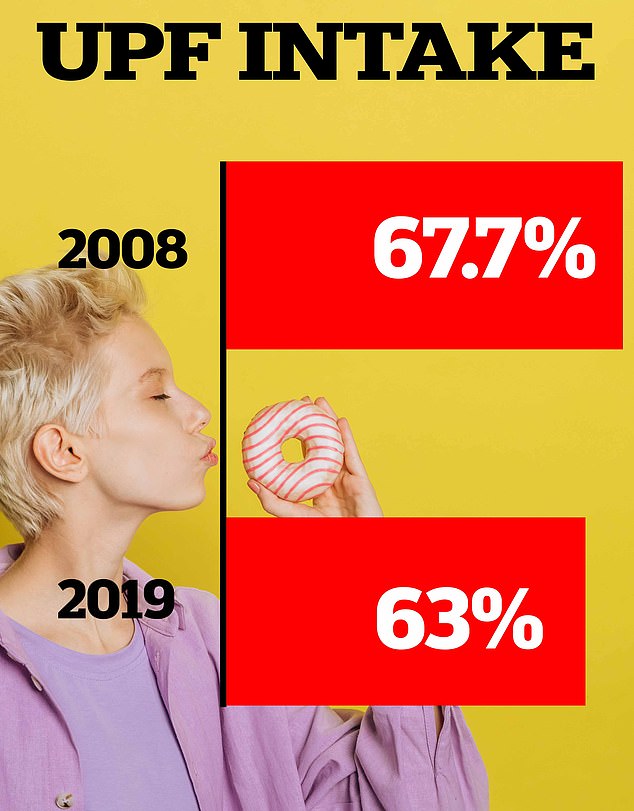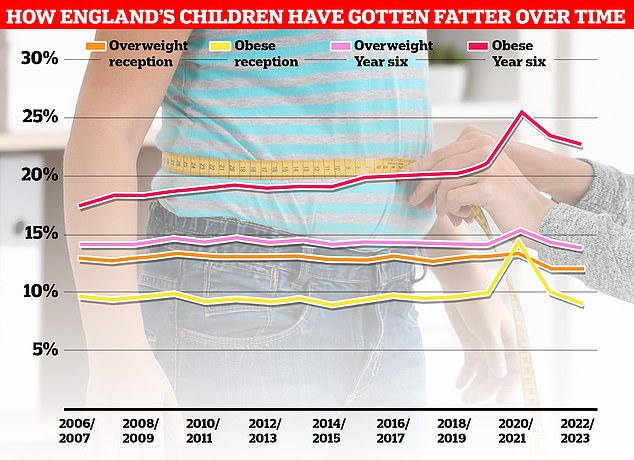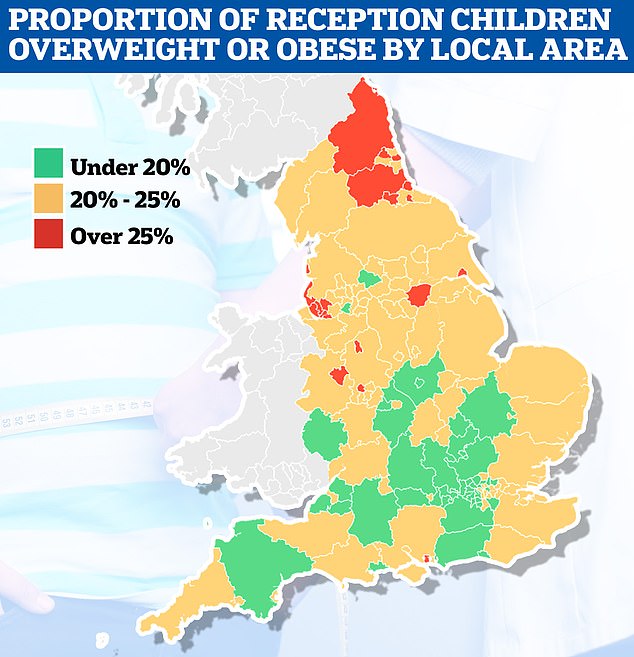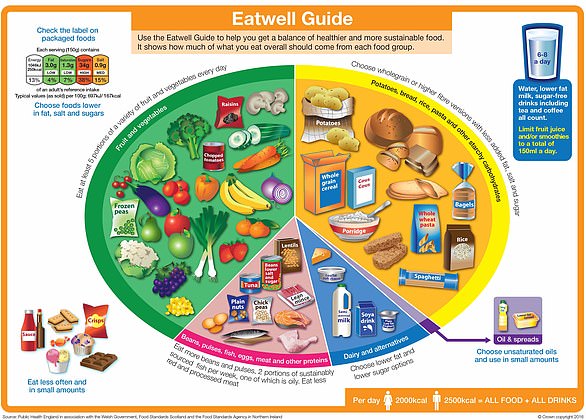British youngsters are getting two-thirds of their every day energy from ultra-processed meals, in response to analysis.
White youngsters and people from deprived backgrounds are consuming essentially the most UPFs, that are mass-produced and sometimes excessive in salt, saturated fats and sugar.
The research discovered that youngsters ages 11 to 18 sometimes get 66 p.c of their energy from these meals, leaving little room for extra nutritious meals.
Consultants mentioned the pattern is especially worrying since these are the childhood the place habits change into 'rooted'.
The research, carried out by the Universities of Cambridge and Bristol, appeared on the diets of three,000 youngsters who took half within the UK Nationwide Weight loss plan and Diet Survey between 2008/09 and 2018/19.

A simple signal {that a} meals is UPF is that it comprises substances you wouldn't discover in your kitchen cabinet, resembling unrecognisable colors, sweeteners and preservatives. One other signal is the quantity of fats, salt and sugar hidden inside every pack, which UPFs sometimes include excessive quantities of

Graphic from MailOnline displaying youngsters's consumption of ultra-processed meals in 2008 and 2019
They stuffed out meals diaries for 4 consecutive days, detailing what they ate and drank each inside and out of doors the house.
Processed meats, crisps, mass-produced breads and breakfast cereals have been linked to an elevated threat of weight problems, sort 2 diabetes and heart problems.
UPFs additionally embrace components and substances that folks don’t use when cooking, resembling preservatives, emulsifiers, and synthetic colours and flavors.
Parental occupation, ethnic group and UK area have been all discovered to affect adolescents' diets.
The common UPF consumption was discovered to be 861 g per day – 66 per cent of the every day power consumption throughout this era.
When checked out over time, they discovered that the penetration fee had declined barely from 67.7 p.c in 2008 to 63 p.c in 2019.
The researchers consider that is probably because of the rise in well being campaigns urging folks to cut back their consumption of sugary or fatty meals, and the UK Authorities's sugar tax which has decreased the quantity of sugar in drinks.
The evaluation discovered that folks residing within the north of England consumed extra energy from UPF than these within the south, at 67.4 and 64.1 per cent respectively.
In keeping with the findings revealed within the European Journal of Diet, consumption charges have been highest at 65.6 per cent when beginning secondary faculty, and declined barely to 63.4 per cent by age 18.
Because of this one in 4 youngsters in England is overweight by the point they depart main faculty.

A couple of million youngsters have been measured for top and weight beneath the Nationwide Youngster Measurement Programme (NCMP). Nationally, the speed is greater than one-third amongst sixth-grade youngsters, though it has declined barely because the onset of Covid.

Amongst 12 months 6 pupils, the nationwide weight problems fee fell from 23.4 per cent to 22.7 per cent in 2021/22. In the meantime, the proportion of youngsters thought-about obese or overweight additionally fell from 37.8 per cent to 36.6 per cent. Each metrics are above pre-pandemic ranges

A graph displaying the proportion of youngsters attending reception who’re obese or overweight, by native space
Dr Yanaiana Chavez-Ugalde, from the College of Cambridge, mentioned: 'Youngsters' consuming patterns and behaviours are influenced by a variety of elements, together with their house surroundings, the advertising they’re uncovered to and the affect of their pals and friends.
'However adolescence can be a crucial time in our lives, the place behaviours start to change into ingrained.
'Our findings clearly present that ultra-processed meals make up the vast majority of adolescents' diets, and their consumption far exceeds ideally suited ranges, given their potential detrimental impacts on well being.'
Calorie consumption from UPF was highest amongst folks from disadvantaged backgrounds at 68.4 per cent, whereas amongst wealthier folks it was 63.8 per cent.

A couple of in 5 youngsters is overweight by the point they depart main faculty, the very best fee ever
Funded by the Nationwide Institute for Well being and Care Analysis, the researchers say extra must be completed to deal with the issue.
Dr Esther van Sluijs, additionally from Cambridge, mentioned: 'Extremely-processed meals present a handy and sometimes cheap answer for households quick on time and earnings, however sadly many of those meals additionally present poor dietary worth.
'This may occasionally contribute to the well being inequalities we see rising in childhood and adolescence.'
Dr. Carmen Piernes-Sanchez, a diet scientist on the College of Oxford who was not a part of the research, mentioned the outcomes mirrored a worldwide pattern.
He mentioned: 'Comparable figures have been reported in different nations, such because the US. This research gives the newest estimates of UPF consumption in adolescents and gives some proof of inequalities throughout age, area, ethnicity and socioeconomic standing (SES) teams.
'Future research of this sort will present data on the highest meals sources that contribute most to UPF consumption, which can assist inform insurance policies to enhance weight-reduction plan high quality within the UK inhabitants.'



